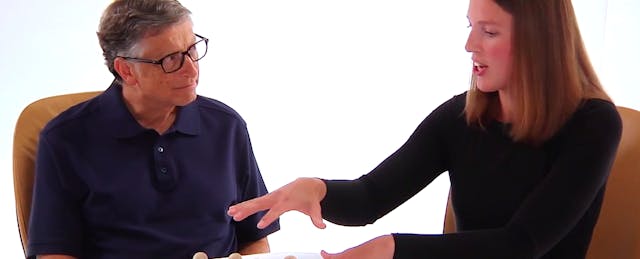From the minute you meet Katie Brown, you get the feeling she’s an amazing teacher. Her intelligence and passion jump out. You immediately think: I would love for my kids to be in her classroom. It’s no surprise to learn she was named the 2014 Washington State Teacher of the Year.
Katie has had a busy summer meeting with policymakers, connecting with colleagues across the country, and even attending Space Camp with the top teachers from other states. So I really appreciated her taking the time to stop by my office last week.
Katie teaches at Shuksan Middle School in Bellingham, a couple hours north of Seattle. Shuksan is a low-income school where two thirds of the students get free or reduced-price lunches. It used to be the kind of school that parents tried to keep their kids from going to, she told me. But in the past few years, things have really turned around. There’s now a waiting list for students to get in. Katie said they have kids who cry on the last day of school—they just don’t want to leave.
A turnaround like that doesn’t happen overnight, of course, and there’s no one factor that causes it. Katie said it started when a strong new superintendent and principal came in and started changing the culture. It’s more collaborative now, and the school has created “a culture of high expectations, balanced with high affection.” There’s also a new focus on data. Shuksan’s teachers start every school year with a “data walk-through,” where they get together and pore over every bit of information about their classes that they can find—from test scores to attendance records and student perception reports—so they can see which areas they need to work on. “You can’t argue with a graph,” she told me. (For a data person like me, that was music to my ears.)
In addition to working with ELL students—kids who are learning to speak English—Katie spends a lot of time coaching her fellow teachers. I was curious about that work, because I think one of the keys to improving education is to help more teachers learn from the very best. Katie had an insight that really struck me: She said we’ve known for a long time that most students won’t learn if you just stick them in a classroom and make them listen to a lecture. They have to put the learning to use and make it relevant to their own lives. And yet most teachers still get their professional development at seminars and conferences, where they sit listening to lectures. “We would never do that with kids,” Katie said, “but we still do it with teachers.”
So she has taken a different approach to coaching teachers at Shuksan. It breaks down into four key areas, as Katie explains in this video:
The approach she describes requires a lot of collaboration, which is easier said than done. For example, opportunities for teachers to work together have to be embedded in the school day: As Katie said, “We can’t expect teachers to seek out other teachers at night, from home.”
We also had a great discussion about the use of standardized test scores. Katie said she’s not opposed to testing students to see whether they’ve mastered the material—in fact, it provides important data that guides her work as a teacher. But we have to be careful how we communicate those results to the kids and their parents.
Katie told me about one recent student of hers, a boy whose family had just moved here from another country. He started the year speaking no English at all—not even “hello”—but by the end of the year, he had moved up four grade levels. That’s amazing progress and it must have taken heroic work from him and his teachers. But according to his scores on the standardized test, he still wasn’t proficient in English. His family got a letter with a dispiriting message: He was failing. “That’s the part that eats at me,” Katie said. “We’re always trying to improve the relationship between the school and the community. Yet because of a policy, we’re expected to say we’re failing. How do we solve that?”
I also asked Katie about the Common Core State Standards, the academic milestones that have been the center of some controversy lately. She started by echoing something I’ve heard in every school I’ve visited: No teacher is opposed to high standards. As Katie said, “Everyone who has read the Common Core standards says, ‘I want my students to be able to do those things.’ ”
The problem is that too few teachers get the support they need to implement the standards. Whether teachers are adopting the Common Core or something else, if they don’t get help implementing the change and the time to do it right, then they’re more likely to turn against it.
At Shuksan, Katie said, putting the standards into practice was hard but manageable, thanks to that support system she describes in the video. “We can take it on together as a staff,” she said. “We have time built into our day to help each other learn and tackle it as a team.” Their system is not the only way, of course, but it’s proof that teachers can and will adopt higher standards when given the right support and enough time to adjust.
In the end, it’s impossible to spend time with a mind-blowing teacher like Katie and not come away with a renewed admiration for the art of teaching. As she put it, “It’s amazing how sophisticated instruction is. A teacher has to think through each student’s moves, predict what their brains will do with everything you say. It’s like you’re conducting an orchestra. When you get kids working in concert with each other, there’s no better feeling in the world.”
If you’re interested in learning more about Katie’s work, I’d encourage you to check out her blog.


